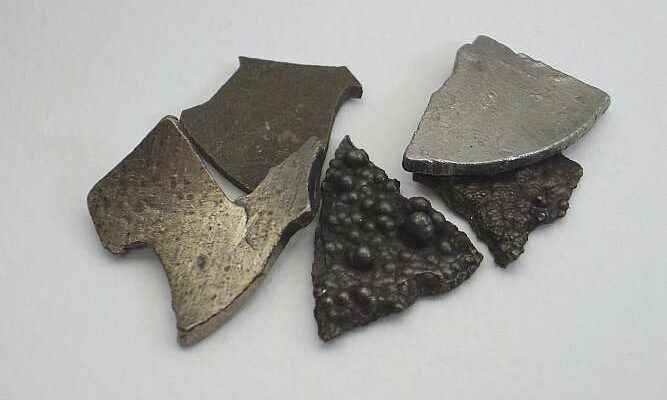Cobalt takes its name from kobolds. These legendary creatures of Germanic folklore were accused by miners of transforming thesilver in one mineral blue. Anyway, the intense blue color it gives to objects is much appreciated.
General
- Symbol: Co
- Atomic number: 27
- Electrons per energy level: 2, 8, 15, 2
- Atomic mass: 58.93 u
- Most stable isotopes: 59H stable with 32 neutrons (100%)
- Series: transition metals
- Group, period, block: 9, 4, d
- Density: 8.9
- Point of merger : 1.495°C
- Boiling point: 2.927°C
History of cobalt
Cobalt is a metal used since antiquity to tint glass dark blue. The Swede Georg Brandt succeeded in extracting it in 1735.
Properties of Cobalt
Gray metal, cobalt is ferromagnetic. It is protected fromoxidation by a thin layer of oxide. It can be attacked by halogens and sulfur compounds. It is also known to have compounds with the fluorinethe chlorinebromine andiodine gas at high temperature.
Use of cobalt
Cobalt is considered a material strategy for the industry. It is found especially in the gas turbinesmade with alloys of ironcobalt and nickel. It also makes it possible to form hard alloys resistant to corrosion. Cobalt is also used in some batteries, particularly in electrodes. It is also a major element for magnets and magnetic media for recording.
As to cobalt blue, it has been used since Antiquity for Chinese porcelain. It is the same element that gives its blue to the porcelain of Saxony.
Health Effects of Cobalt and Toxicity
The toxicity cobalt can come from its chemical properties, from the radiotoxicity of certain isotopes radioactive or even synergy with other metals. Although he is a trace element at low doses because present in the vitamin B12it has been shown that cobalt is cytotoxic but also genotoxicby oxidative damage on theDNA.
This metal is further classified as a carcinogenic possible. Cobalt can also cause heart problems and lung conditions, among others.
You will also be interested
Interested in what you just read?
